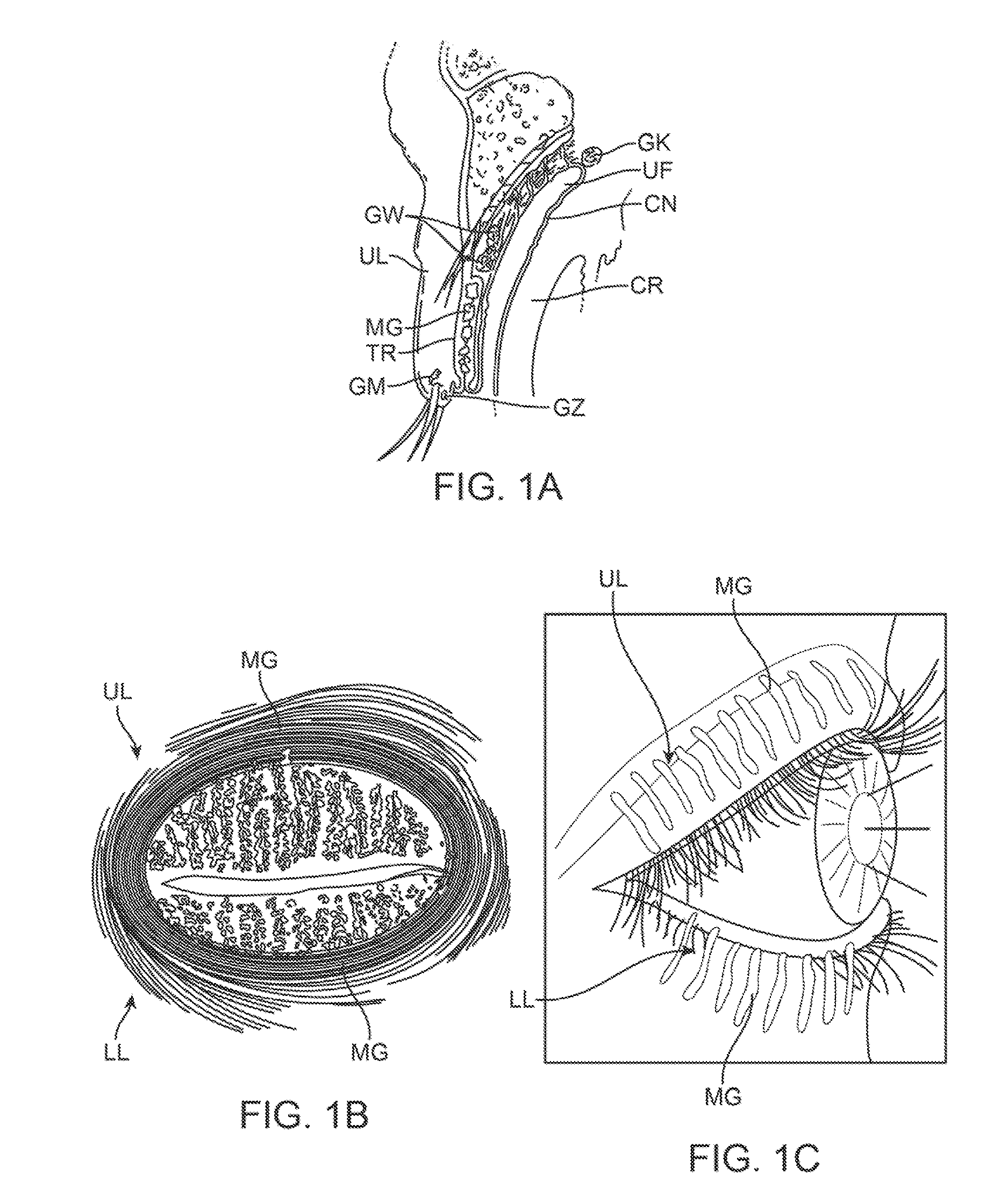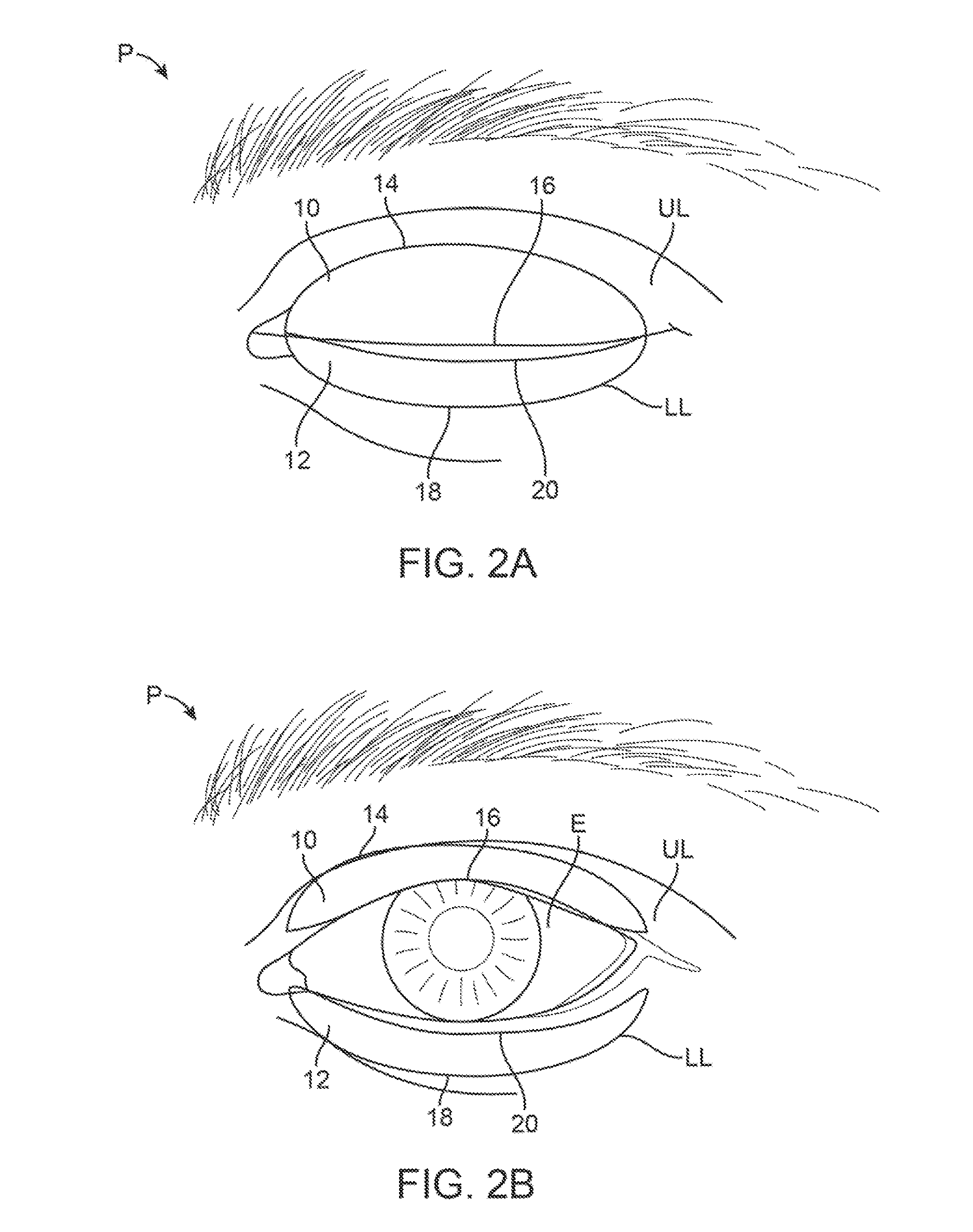Dry eye treatment systems
a technology for dry eyes and treatment systems, applied in the field of dry eye treatment systems, can solve the problems of dry eyes, dry eyes, dry eyes, etc., and achieve the effect of further flexibility in treatmen
- Summary
- Abstract
- Description
- Claims
- Application Information
AI Technical Summary
Benefits of technology
Problems solved by technology
Method used
Image
Examples
Embodiment Construction
[0074]In treating conditions such as meibomian gland dysfunction (MGD), which is commonly associated with the evaporative form of dry eye syndrome (DES), a patch, strip or thin adhesive device can be affixed to the skin of the upper and / or lower eyelids to deliver heat or other forms of energy, pressure, drugs, moisture, etc. (alone or in combination) to the one or more meibomian glands contained, within the underlying, skin. In particular, the treatment strip or strips may be configured and sized specifically for placement over one or more targeted meibomian glands contained within the skin of the upper and / or lower eyelids. The application of thermal therapy, e.g., heating or cooling, can cross the eyelids quite easily as the eyelids are generally the thinnest skin found on the human body and the tissue is highly vascularized. With the root of the eyelid located proximally and the eyelid margin located distally, the net arterial flow of blood flows from proximal to distal. So wher...
PUM
 Login to View More
Login to View More Abstract
Description
Claims
Application Information
 Login to View More
Login to View More - R&D
- Intellectual Property
- Life Sciences
- Materials
- Tech Scout
- Unparalleled Data Quality
- Higher Quality Content
- 60% Fewer Hallucinations
Browse by: Latest US Patents, China's latest patents, Technical Efficacy Thesaurus, Application Domain, Technology Topic, Popular Technical Reports.
© 2025 PatSnap. All rights reserved.Legal|Privacy policy|Modern Slavery Act Transparency Statement|Sitemap|About US| Contact US: help@patsnap.com



